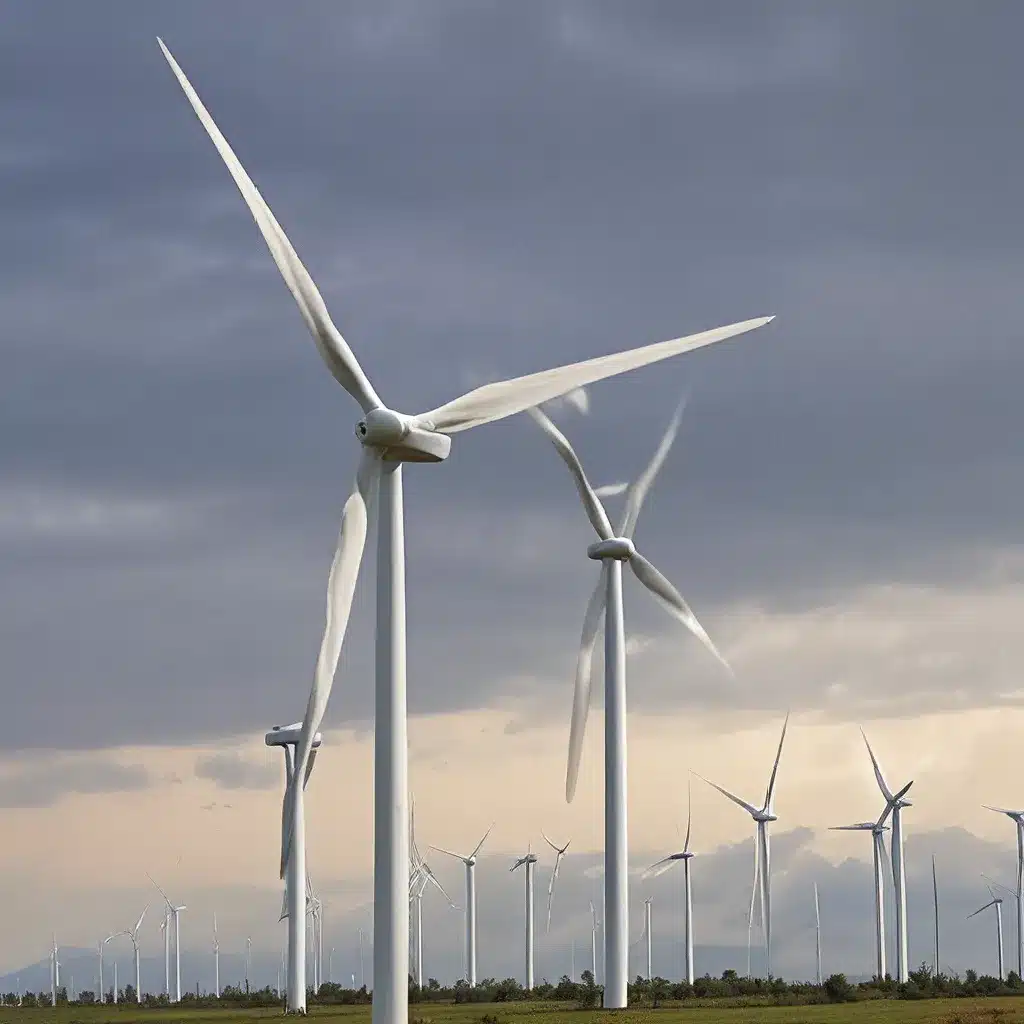
As a renewable energy enthusiast, I’ve always been fascinated by the incredible potential of wind power. While we often hear about the massive offshore wind farms and sprawling wind turbine fields, I’ve been particularly intrigued by the opportunities for small-scale wind power solutions. You know, the kind that could potentially power a single home or a small community – the unsung heroes of the renewable revolution.
Untapping the Power of the Breeze
Let’s rewind a bit and talk about the basics of wind energy. Wind is essentially the flow of air caused by uneven heating of the Earth’s surface by the sun. As warm air rises, it creates areas of low pressure that are then filled by the cooler, denser air rushing in. This constant movement of air is what we harness to generate electricity through wind turbines.
Now, while the global potential for wind energy is absolutely staggering – we’re talking over 400 gigawatts in just the Great Lakes region alone! – the reality is that not everyone has access to those vast, open spaces perfect for utility-scale wind farms. That’s where small-scale wind power comes into play.
The Rise of Small-Scale Wind Turbines
Small-scale wind turbines, often referred to as ‘micro-wind’ or ‘mini-wind’ systems, are designed to meet the energy needs of individual homes, small businesses, or remote communities. These compact, typically pole-mounted turbines can range in size from a few feet to around 100 feet in height, with correspondingly smaller rotor diameters.
The beauty of these smaller wind turbines is that they can be installed in a wider variety of settings, including urban and suburban areas, where large-scale wind farms may not be feasible. Plus, they often come with a more manageable price tag, making them an attractive option for homeowners and small-scale users looking to harness the power of the wind.
Debunking the Myths of Small-Scale Wind
Now, I know what you might be thinking – “Isn’t small-scale wind power just a novelty, with limited real-world impact?” Well, my friend, let me debunk that myth for you.
Recent advancements in wind turbine technology have dramatically improved the efficiency and cost-effectiveness of small-scale wind power. Modern mini-wind turbines can generate enough electricity to power a typical household, and in some cases, even feed excess energy back into the grid.
And contrary to popular belief, these systems aren’t just for remote off-grid locations. In fact, small-scale wind turbines are increasingly being integrated into urban and suburban settings, often complementing rooftop solar panels to create hybrid renewable energy systems.
The Benefits of Going Small-Scale
So, what are the actual benefits of embracing small-scale wind power? Well, let me tell you, the list is quite impressive:
-
Cost Savings: By generating their own electricity, homeowners and small businesses can reduce their reliance on the grid and lower their energy bills.
-
Energy Independence: Small-scale wind turbines empower individuals and communities to take control of their energy future, reducing their dependence on centralized power sources.
-
Environmental Impact: Compared to fossil fuels, small-scale wind power generates clean, renewable energy with minimal greenhouse gas emissions – a win-win for the planet.
-
Flexibility and Scalability: These compact wind turbines can be installed in a variety of settings, from backyards to rooftops, and can be easily scaled up or down to meet changing energy needs.
-
Job Creation: The growth of the small-scale wind industry has led to the creation of new skilled jobs in manufacturing, installation, and maintenance, further boosting local economies.
Overcoming the Challenges
Of course, as with any emerging technology, small-scale wind power isn’t without its challenges. One of the biggest hurdles is the variable nature of wind itself, which can make it difficult to predict and manage the energy output.
Additionally, noise and visual impact concerns from neighbors have sometimes hindered the widespread adoption of small-scale wind turbines, especially in densely populated areas.
But you know what they say – where there’s a will, there’s a way. And the renewable energy community has been working tirelessly to address these issues head-on.
The Future of Small-Scale Wind Power
As we look to the future, I can’t help but get excited about the incredible potential of small-scale wind power. With ongoing research and development, we’re likely to see even more efficient, quieter, and visually appealing wind turbine designs that can seamlessly integrate into our homes and communities.
Firewinder, for example, is at the forefront of this movement, offering innovative small-scale wind turbine solutions that are designed to be both high-performing and aesthetically pleasing. Their commitment to pushing the boundaries of what’s possible with wind power is truly inspiring.
And as the cost of these technologies continues to drop and their accessibility increases, I believe we’ll see a surge in the number of homeowners, small businesses, and off-grid communities embracing the power of the wind.
Embracing the Wind Revolution
So, my fellow renewable energy enthusiasts, I encourage you to keep an eye on the exciting developments in small-scale wind power. Whether you’re looking to reduce your carbon footprint, gain energy independence, or simply explore the thrill of harnessing the wind, these compact turbines might just be the solution you’ve been searching for.
Who knows, maybe one day we’ll all have our very own backyard wind farms, quietly churning away and powering our homes with the gentle breeze. The future is bright, and it’s blowing in our direction.

